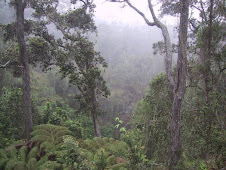San Francisco moved a step closer Wednesday to imposing the country's most stringent green building codes, regulations that would require new large commercial buildings and residential high-rises to contain such environmentally friendly features as solar power, nontoxic paints and plumbing fixtures that decrease water usage.
City officials estimate that by 2012, the new green building codes could reduce carbon dioxide emissions by 60,000 tons and save 220,000 megawatt hours of power and 100 million gallons of drinking water.
The Building Inspection Commission, which oversees building permitting and construction, voted unanimously Wednesday to send the green building standards to the Board of Supervisors. If the supervisors approve the regulations, Mayor Gavin Newsom, who last year convened a task force to study and develop the proposals, has promised to sign them into law.
The rules, if implemented, would be phased in gradually, and developers would have until 2012 to fully comply with the strictest levels of the green building codes.
"George Bush is doing nothing to fight climate change on the national level, but with this groundbreaking ordinance, we're doing our part on the local level," said Nathan Ballard, a Newsom spokesman. "Many people don't realize that buildings have a big carbon footprint, and this will help reduce the size of that footprint."
While local builders initially would see the overall cost of their projects increase by as much as 5 percent as a result of the new requirements, they nonetheless applauded the stricter codes.
"One of the best things about it is the fact that it's a gradual ordinance," said Ken Cleaveland, the director of government and public affairs for the San Francisco Building Owners and Managers Association and a member of Newsom's green building task force. "When you set a goal and give the industry time to meet that goal, you have a far better chance of succeeding."
New residential high-rises taller than 75 feet, new commercial buildings larger than 5,000 square feet and renovations on buildings larger than 25,000 square feet would have to comply with the environmentally friendly building standards known as Leadership in Energy and Environmental Design, or LEED. The standards were developed by the U.S. Green Building Council.
Buildings are given certified silver, gold or platinum LEED ratings depending on how many green features they incorporate and their energy efficiency.
All new residential construction would have to comply with another nationally accepted standard, known as GreenPoint Rated, which requires home builders to use such features as paint made from recycled materials and solar-powered water-heating systems.
"The goals that are stated here are all achievable and something that we have to work to develop in our building code," Building Inspection Commissioner Vahid Sattary said during Wednesday's meeting in City Hall.
Boston is the only large U.S. city that has imposed strict environmental standards for private construction, but its mandate is not as far-reaching as San Francisco's proposal.
San Francisco Board of Supervisors President Aaron Peskin, a vocal Newsom critic, signaled his support and agreed to allow a similar green building measure he had introduced last year to be incorporated into the mayor's proposal.
"It is a societal imperative that we start doing this in new construction in San Francisco and help lead the nation and reduce the carbon footprint in San Francisco," Peskin said.
He expressed concern, however, that the legislation doesn't go far enough to protect existing buildings, especially historic ones.
"The greenest building that exists today is one that is already built," he said. "I want to make sure this does not become a license to demolish existing buildings."
Jennifer Matz, managing deputy director of the Mayor's Office of Economic and Workforce Development, said city officials had hoped to offer incentives to builders whose projects reached the highest levels of environmental performance. In the end they decided against that idea because they feared it could lead to developers unnecessarily tearing down buildings or remodeling structures in order to take advantage of incentives.
"What we have now is legislation that says if you're going to build, you have to build to this standard. But it doesn't encourage you to build a green building in lieu of keeping your existing building," she said.
To get involved
The San Francisco Board of Supervisors will consider stringent new building codes designed to reduce the environmental impact of development. To find contact information for your elected supervisor, log on to links.sfgate.com/ZCHU.


No comments:
Post a Comment